The ENTC now has a new website, at www.entc.org.sz
Our logo is adapted from a painting by Phillip Dlamini, 1998, of a purple crested turaco. In traditional Swazi dress, the red feathers feature in the royal headdress, so this bird illustration is not only a symbol for wildlife conservation, but also of cultural heritage.
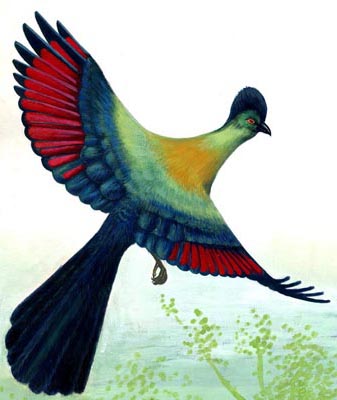


(Information adapted from "Birds of the Malolotja Nature Reserve, Swaziland", by Richard Boycott and Vincent Parker, 2003.)
The herpetofauna (amphibians and reptiles) of Malolotja is composed of 91 species (59% of Swaziland's recorded species), represented by 25 amphibians and 66 reptiles (one tortoise, 29 lizards and 36 snakes). This diverse fauna includes several regionally important and rare species as well as one Swaziland endemic lizard, the Swazi Thick-tailed Rock Gecko (Afroedura major), and two other near-endemic reptiles, the Barberton Girdled Lizard (Cordylus warreni barbertonensis) and the Swazi Rock Snake (Lamprophis swazicus) (Boycott 1992). Other regionally important species include the rare Natal Ghost Frog (Heleophryne natalensis), the Yellow-striped Reed Frog (Hyperolius semidiscus), and the Plaintive Rain Frog (Breviceps verrucosus), one of three species of rain frogs. Several species that are restricted to the temperate highveld are known from Malolotja and nowhere else in Swaziland. Some of the frogs occur only in upland vlei and bog systems. These include the Striped Stream Frog (Strongylopus fasciatus), the Grassland Ridged Frog (Ptychadena porosissima), the Dwarf Dainty Frog (Cacosternum parvum) and the Long-toed Running Frog (Semnodactylus wealii). One of the most ubiquitous species is the Mozambique Rain Frog (Breviceps mossambicus) which calls incessantly from October to February from grassland habitats. On those rare humid afternoons with a thunderstorm brewing they will emerge en masse and crawl around all over the roads and trails.
Of the 36 species of snakes recorded, several potentially dangerous snakes occur in Malolotja. These include, in the higher-lying areas, the Puffadder (Bitis arietans), Rinkhals (Hemachatus haemachatus) and Boomslang (Dispholidus typus) and, in the lowerlying warmer areas, the Black Mamba (Dendroaspis polylepis), Mozambique Spitting Cobra (Naja mossambica). Vine Snake (Thelotornis capensis) and Short-snouted Cobra (Naja annulifera). The last species is only known from a shed skin collected in Malolotja north. The South African Rock Python (Python natalensis), Swaziland's largest snake, occurs in the Nkomati and lower Malolotja valleys. Amongst the lizard fauna a number of rare and interesting species have been recorded including Delalande's Sandveld Lizard (Nucras lalandii). Ornate Sandveld Lizard (Nucras ornata), Transvaal Crag Lizard (Pseudocordylus melanotus). Montane Burrowing Skink (Scelotes mirus). Giant Legless Skink (Acontias plumbeus) and Ocellated Dwarf Gecko (Lygodactylus ocellatus). All three of southern Africa's highly specialised grass lizards (Chamaesaura spp.), also known as snake-lizards, occur in Malolotja representing the only known locality in the region where all three species have been recorded. Only one water tortoise, the Serrated Hinged Terrapin (Pelusios sinuatus), is known from Malolotja and it occurs in the Nkomati River (Boycott 2001).
Malolotja Amphibians Checklist
(Information from "Threatened Vertebrates of Swaziland", by A Monadjem, R C Boycott, V Parker and J Culverwell, 2003.)
Boidae (pythons and boas)
Python sebae natalensis Smith, 1840
(Southern African python)
(SiSwati: inhlatfu)
Southern African Red Data Status: Vulnerable
International Red Data Status: Not listed
Gekkonidae (geckos)
Afroedura pondolia major Onderstall, 1984
(Swazi thick-tailed rock gecko)
Southern African Red Data Status: Not listed
International Red Data Status: Not listed
Lacertidae (lacertids)
Nucras lalandii (Milne-Edwards, 1829)
(Delalande's sandveld lizard)
Southern African Red Data Status: Not listed
International Red Data Status: Not listed
Cordylidae (girdled and crag lizards)
Chamaesaura aenea (Wiegmann) Fitzinger, 1843
(Transvaal grass lizard)
Southern African Red Data Status: Not listed
International Red Data Status: Not listed
Chamaesaura anguina anguina (Linnaeus, 1758)
(Cape grass lizard)
Southern African Red Data Status: Not listed
International Red Data Status: Not listed
Colubridae (typical snakes)
Lamprophis swazicus Schaefer, 1970
(Swazi rock snake)
Southern African Red Data Status: Rare
International Red Data Status: Near Threatened
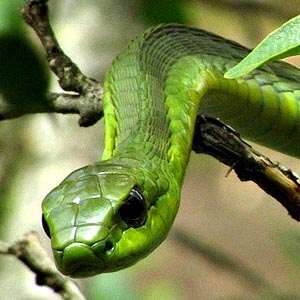
Boomslang
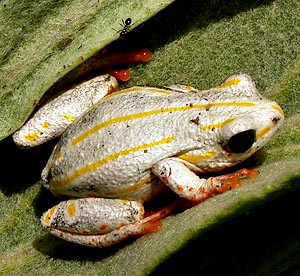
Painted Reed Frog

Southern Tree Agama
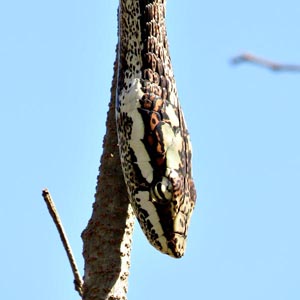
Southern Twig Snake
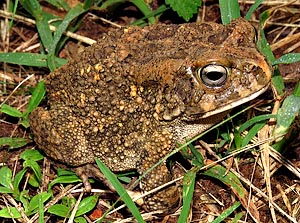
Guttural Toad
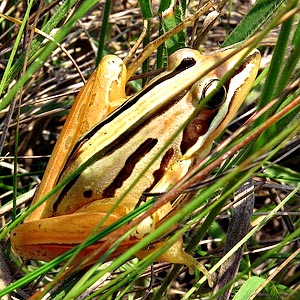
Striped Stream Frog
Our Contacts:
Head Quarters: (+268) 2416 1489/1179
Email: info@sntc.org.sz
King Sobhuza II Park: (+268) 2416 1489/1179
Email: ksmp@sntc.org.sz
National Museum: (+268) 2416 1489/1179
Email: curator@sntc.org.sz
Copyright © ESWATINI NATIONAL TRUST COMMISSION
Malolotja Nature Reserve: (+268) 2444 3241 / (+268) 2416 1480
Email: culturalvillage@sntc.org.sz
Mantenga Nature Reserve and Swati Cultural Village: 2416 1151/1178
Email: culturalvillage@sntc.org.sz
Mlawula Nature Reserve: (+268) 2383 8885 (Reception)
(+268) 2383 8453 (Senior Warden)
Email: culturalvillage@sntc.org.sz
Magadzavane Lodge: (+268) 2343 5108/9
Email: magadzavane@sntc.org.sz